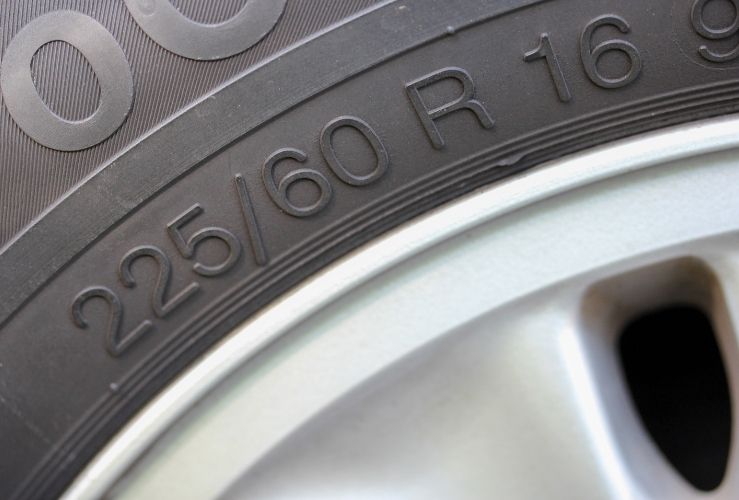Need to replace one or more of your car's tyres?
Discover how to find out the right tyre size you need for your car.
What size tyres do I need?
There are a few different ways to find out what size tyres you need for your car:
Current tyres
You can find the information relating to your tyre specification on the sidewalls of your current tyres.
Vehicle handbook
Alternatively, to find the answer to ‘what tyres fit my car,’ check your vehicle handbook.
Details of the required tyre specification will be listed within the handbook, and/or on a label on your door jam or fuel cap.
Online search tool
Another easy way to find out your tyre size is to enter your registration number into a "Find a tyre" search tool online.
Some tools also let you search by brand and model.
But you may wish to know exactly how to read your tyre size code.
If so, read on.

How to read tyre size
Here's an example tyre size: 200/65 R16 95V
- 200: tyre width in mm - so 200mm
- 65: profile; height as a percentage of full tyre width
- R: type of tyre. Most tyres are 'radial' - R. But occasionally a tyre is B (bias belt) or D (diagonal)
- 16: wheel rim diameter in inches
- 95: load index - how much weight it can bear (see below)
- V: this is the speed rating, or maximum speed (see below). In this case, 118 miles per hour
Tyre size elements explained in detail:
Tyre Width
The first three digits of a tyre code denote the tyre's width.
Wider tyres have better traction - but result in more road noise. “200” in the above example.
Tyre Profile
This is also known as the "aspect ratio" of your tyre.
This figure is arrived at by dividing the tyre's sidewall height by the tyre's width, then multiplying the result by 100. “65” in the example above.
Tyre Rim
The rim is visible after the tyre is removed.
The rim width measurement will be slightly different from the tyre width. These figures are therefore listed separately. “16” in the above example.
Tyre Load Index
This figure corresponds to the load capacity of the tyre, i.e. the maximum load the tyre can carry at the speed rating listed.
"95" in the above example means 1,521 lbs or 690kgs at the speed rating below.
Tyre Speed Rating
This denotes how fast the vehicle can go at the specified load index (see above).
"V" in the example above, or a maximum speed of 149mph at the “95” load index.

Other tyre markings and specifications:
Extra Load (XL)/Reinforced (RF)
Tyres marked with either XL or RF have been specially made to deal with heavier loads.
Runflat
Runflat tyres are manufactured with reinforced sidewalls, so in the event of a flat tyre, the vehicle can be driven up to 50 miles at a top speed of 50mph.
Brands with models that offer Runflats include Mini, BMW, Mercedes and Audi.
Self-sealing runflat
As the name suggests, these tyres feature sealant inside that closes over a hole caused by a foreign object - such as a nail.
Should you change tyre size?
Most car owners only change tyres when their old ones wear out or show signs of damage.
Most driver's buy replacements of the same size. However, some people change tyre size to improve certain driving parameters of their vehicle.
While this may offer improvements in some regards - such as shorter braking distances - they invariably come with drawbacks - such as a more rigid ride or more road noise.
You should not choose a new tyre size for which your vehicle is not suited.




